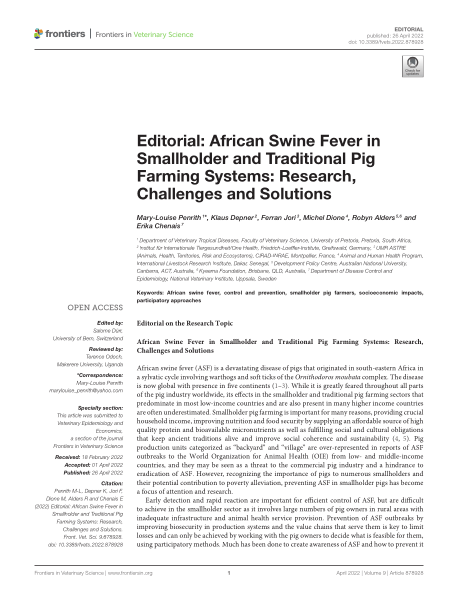Editorial: African swine fever in smallholder and traditional pig farming systems: Research, challenges and solutions
Abstract
African swine fever (ASF) is a devastating disease of pigs that originated in south-eastern Africa in a sylvatic cycle involving warthogs and soft ticks of the Ornithodoros moubata complex. The disease is now global with presence in five continents (1–3). While it is greatly feared throughout all parts of the pig industry worldwide, its effects in the smallholder and traditional pig farming sectors that predominate in most low-income countries and are also present in many higher income countries are often underestimated. Smallholder pig farming is important for many reasons, providing crucial household income, improving nutrition and food security by supplying an affordable source of high quality protein and bioavailable micronutrients as well as fulfilling social and cultural obligations that keep ancient traditions alive and improve social coherence and sustainability (4, 5). Pig production units categorized as “backyard” and “village” are over-represented in reports of ASF outbreaks to the World Organization for Animal Health (OIE) from low- and middle-income countries, and they may be seen as a threat to the commercial pig industry and a hindrance to eradication of ASF. However, recognizing the importance of pigs to numerous smallholders and their potential contribution to poverty alleviation, preventing ASF in smallholder pigs has become a focus of attention and research.

